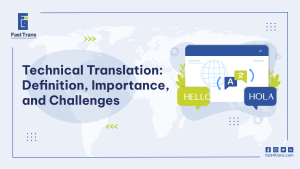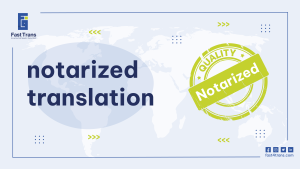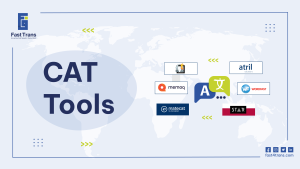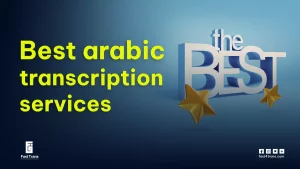If you’re a US-based e-commerce website, you might have a good portion of customer landing on your website and they speak Arabic, and US dollars are not their currency. There are 420+ million Arabic speakers coming from a whole range of Arab and non-Arab countries.
That’s a huge customer base you don’t want to miss out on! Because, the odds are, that most of these customers will bounce back if they don’t see content in their native language. This is the same with most non-English speakers out there. In fact, English is only spoken by 1.5 billion people.
Arabic eCommerce localization tailors an online store to Arabic-speaking customers by adapting language, design, payment methods, and SEO to fit local preferences. This process includes translating content, adjusting layouts for right-to-left text, and ensuring culturally relevant pricing, legal compliance, and customer support. By working with specialists like Fast Trans and Mwwared, businesses can enhance their site’s user experience, improve search engine visibility, and boost conversions, all while respecting regional nuances. The result is a seamless, personalized shopping experience that resonates with local audiences and meets their unique needs.
Call us now at +20 155 219 6068 or message us on WhatsApp: +20 155 419 6160.
Read more: Best Localization Agencies in the Middle East
What’s Arabic eCommerce Localization?
E-commerce localization refers to adapting every part of an e-commerce website (a website where you sell products) to fit a certain local audience.
Websites like Shopify, Amazon, and eBay are classic examples of e-commerce.
This involves translating the content of the website, adjusting content, copy, layout, design, measuring units, date, time, currency, phone number extensions, and much more! All for the purpose of creating a smooth customer experience from the moment they land on your website until they purchase.
The MENA region has experienced explosive growth in digital commerce, with countries like the UAE, Saudi Arabia, and Egypt leading the charge. Online shopping penetration continues to rise, driven by increasing smartphone adoption, improved internet infrastructure, and a young, tech-savvy population.
Companies like Fast Trans have demonstrated how specialized localization services can bridge the gap between international brands and Arabic consumers, facilitating successful market entry through comprehensive cultural and technical adaptation. The region’s diverse economic landscape, from oil-rich Gulf states to emerging markets in North Africa, also requires tailored approaches for different countries and consumer segments.
Beyond translation, Arabic localization ensures your product descriptions, marketing campaigns, and checkout process are culturally relevant, technically adapted for right-to-left (RTL) display, and optimized for regional search engines. This builds trust, enhances user experience, and increases conversion rates, giving your brand a competitive edge in one of the world’s most dynamic online retail markets.
Read more: Localizing your website: A step towards expanding your small business globally
Types of Arabic eCommerce Localization Services
Successfully entering the Arabic eCommerce market requires deep cultural, linguistic, and technical adaptation. Below are six essential types that define effective localization in the region:
1. Language & Dialect Arabic E-commerce Localization
Arabic is a highly nuanced language with significant dialectal variations across the MENA region. Modern Standard Arabic (MSA) is widely understood, but consumers respond better to colloquial dialects (e.g., Egyptian, Gulf, or Levantine).
Proper translation goes beyond word-for-word conversion—it must reflect local idioms, humor, and cultural references.
2. Culturally Adapted Arabic E-commerce Localization
Visual content must align with Islamic values and regional aesthetics. This includes modest fashion representations, gender-appropriate imagery (especially in conservative markets like Saudi Arabia), and culturally relevant color symbolism (e.g., green for Islam, gold for luxury). Avoiding culturally insensitive visuals (such as excessive skin exposure or alcohol-related content) is critical for brand trust.
3. Sharia-Compliant Payment Methods for Arabic E-commerce Localization
Cash-on-delivery (COD) remains dominant in many Arab markets, but digital payments are rising. Localized payment gateways like Mada (KSA), Benefit (Bahrain), and Fawry (Egypt) are essential. Additionally, Islamic finance-compliant options (e.g., halal buy-now-pay-later services like Tamara and Tabby) cater to religious preferences.
4. Arabic E-commerce Localization Customer Support
Arabic consumers expect 24/7 support in their dialect, preferably via WhatsApp or live chat. Brands must also adapt to formal communication styles (e.g., using honorifics like “عميلنا العزيز” – “Our Dear Customer”) and respect local holidays (e.g., Ramadan working hours).
5. Regional Logistics & Returns Policies for Arabic E-commerce Localization
Cross-border shipping is challenging due to fragmented postal systems. Partnering with local last-mile providers (e.g., Aramex, Naqel, or SMSA Express) ensures timely delivery. Transparent return policies, especially for COD orders, reduce cart abandonment.
6. Arabic Localized Marketing & SEO
Google dominates, but Arabic keyword optimization differs by country. For example, “موبايل” (Egypt) vs. “جوال” (Gulf) for “mobile phone.” Campaigns must align with regional trends—Ramazon sales, White Friday (MENA’s Black Friday), and influencer partnerships with local celebrities.
Tips for Arabic eCommerce Localization
Effective Arabic e-commerce localization involves adjusting pricing, payment methods, and SEO for local markets, ensuring content is tailored and culturally relevant. Optimizing meta tags, providing multilingual customer support, and complying with local legal standards are also crucial for success.
1. Putting time and effort into pricing
If you are selling your product in the United States, but aiming at selling it in an Arab country like Egypt for instance, pricing is going to change drastically.
How you price your product in the US will change because in Egypt you have different competitors, a completely new currency, and Inflation!
Moreover, your US customer probably uses online payment methods like Apple Pay, Pay Pal, or a US local account. However, this is quite irrelevant to Egyptian customers since they will most likely use local Egyptian accounts, or local money transfer methods like Insta Pay or Vodafone Cash.
2. SEO Optimization
This one is a no-brainer, yet some underestimate the importance of SEO!
Customer choices are impacted by Google ranking. If they never heard about you, and you are lagging in ranking pages, you’ll thank yourself If you start prioritizing SEO now.
In your case of a multilingual e-commerce website, you need to do keyword research based on the target audience and their locale. What are their search habits? What keywords do they use in the search bar? What are the high-volume words right now?
3. Optimize meta tags and Hreflang Tags
For example, title tags can be written in Arabic, So instead of writing Best Clothes E-commerce website, you can write أفضل متجر الكتروني للملابس حول العالم.
Use a Hreflang tag to help search engines pick which version of the site to display to the user. If the user’s location is showing Africa or Egypt, then they get the version of the website that ends in EG, and vice versa.
US website URL ends in (US)
Egyptian website URL ends in (EG)
You can also improve local search visibility by including local business details like an address in Cairo, phone number, email address…etc.
4. Going beyond translating the content
An e-commerce store relies on many types of content to make your product stand out in the best possible way to the potential customer. Unlike different kinds of websites, a user landing on an e-commerce one won’t invest their money in a product unless it seems useful and valuable. That being said, they check all parts of page content. From product descriptions to measurements, product pictures, return and refund policies…etc.
With this in mind, you can’t risk providing a poor experience to a customer if you rely on simple translation. Although in many cases, word-for-word translation will do, localization can take you the extra mile; it keeps the customer engaged, and pleased to find a website that’s familiar to them. All of which can increase the chances of them buying your product.
5. Multilingual Customer Support
Customer Service is an essential part of your localization process because it’s where you meet one-to-one with customers, whether it’s via website chat, WhatsApp, or even a Chatbot, the way you interact with the customer means their perception of your business as a whole.
Therefore, customer service localization entails:
- Addressing the customer in their preferred language
- Translating FAQs, and offering help center articles in multiple languages
- Localizing email communications (account set up, purchase notification, email marketing shipment updates…etc)
- Providing a multilingual team of Agents who can email, text, or call customers and address them in their native language
6. GDPR Compliance & Content Restrictions
Legal regulations and requirements are the first thing you might want to make sure of. Sticking to our example, your US-based e-commerce business doesn’t have to be GDPR compliant in Egypt, however, it needs to adhere to the Data Protection Law (Law No. 151 of 2020). Moreover, as an Arab Muslim country, it can have some restrictions on content or products to sell.
Part of localization is to get your hands on a local lawyer who can help you avoid penalties.
Read more about: 8 Arabic eCommerce Translation Mistakes to Avoid
Why it’s important to localize your E-commerce store to Arabic
- Offering a personalized experience for the customers wherever they are in the world.
- Eliminating language and cultural gaps in the online shopping experience.
- Localization infers respect for customers:
- This is automatically translated into a better brand reputation.
- Competition is like huge waves, localization is the competitive edge that lets you surf over the waves.
- Build a relationship with customers based on cultural understanding.
- Impeccable customer service that leaves them happy each they they interact with you
- Improving ranking in search engines like Google.
- Get improved conversion rates.
How to Translate Your Shopify Store into Arabic?
To translate your Shopify store into Arabic, use multilingual features, translation apps, or hire professional services for accurate content localization. Ensure SEO optimization, RTL support, and culturally relevant user experience for Arabic-speaking customers.
1. Use Shopify’s Built-in Translation Features
Utilize Shopify’s multilingual features available in Shopify Markets to add Arabic as a language for your store. You can set up Arabic translations for your product descriptions, navigation, and checkout.
2. Install a Translation App
Explore Shopify’s App Store for translation apps like Weglot, Langify, or Translate My Store. These apps help automate translations and support Arabic.
3. Manually Add Arabic Content
Write product descriptions, blog posts, and page content directly in Arabic to ensure accuracy and cultural relevance.
4. Hire Professional Translators
Engage professional translators who are native Arabic speakers for high-quality and accurate translations.
5. Partner with Translation Services like Fast Trans
Fast Trans offers expert translation services, ensuring your Shopify store’s content is localized and culturally appropriate for Arabic-speaking customers. They specialize in translating product details, legal pages, and marketing materials with precision.
6. Optimize Right-to-Left (RTL) Layout
Since Arabic is an RTL language, ensure your Shopify theme supports RTL formatting. Adjust text alignment, navigation menus, and page layouts to accommodate Arabic users.
7. Translate Metadata and SEO Elements
Localize meta titles, meta descriptions, and alt text for images in Arabic to improve your store’s visibility on search engines in Arabic-speaking regions.
8. Adapt Currency and Payment Options
Display prices in local currencies and enable payment gateways commonly used in Arabic-speaking countries.
9. Test Your Store
Preview the Arabic version of your store to ensure proper formatting, alignment, and usability.
10. Seek Feedback from Arabic-Speaking Users
Share your store with native Arabic speakers to get feedback on language accuracy and user experience.
By leveraging services like Fast Trans and following these steps, you can create a professional and culturally relevant Arabic version of your Shopify store.
What are the challenges of creating an Arabic Shopify store?
Creating an Arabic Shopify store presents challenges like adapting to RTL text direction, localizing content, and integrating compatible payment gateways. Proper SEO, cultural sensitivity, and mobile optimization are key to attracting Arabic-speaking customers.
1. Language and Text Direction:
Arabic is a right-to-left (RTL) language, and adjusting the Shopify platform for this direction can cause design and layout challenges. Customizing themes to support RTL text and ensuring that product descriptions, navigation, and checkout pages align properly can be complex.
2. Translation and Localization:
Translating your store content accurately into Arabic is not enough; it also requires cultural adaptation. This includes offering localized product descriptions, pricing, and payment methods that resonate with Arabic-speaking customers. Fast Trans Company can assist in providing professional and certified translation services to ensure high-quality and culturally relevant content.
3. Fonts and Typography:
Choosing the right fonts that support the Arabic script and ensure readability on all devices is essential. Not all Shopify themes support Arabic fonts out-of-the-box, which may require customizations or additional apps.
4. Payment Gateway Integration:
Some payment gateways may not be compatible with Arabic-speaking regions or may not support Arabic currencies. It’s important to ensure that your Shopify store can integrate smoothly with local payment methods in the region.
5. SEO and Keywords:
Optimizing your Shopify store for Arabic-speaking customers involves using the correct keywords in Arabic. This requires an understanding of local search behavior, which might differ significantly from Western or English-speaking markets. Translation services like those from Fast Trans Company can help with keyword optimization and SEO content to improve visibility.
6. Customer Support in Arabic:
Providing efficient customer support in Arabic is crucial for building trust with local customers. You may need to adjust your Shopify store’s customer service platform to support Arabic language interactions and provide timely responses in Arabic.
7. Legal and Compliance Issues:
Arabic-speaking countries have their own specific rules and regulations when it comes to e-commerce, such as data protection laws, taxes, and shipping regulations. Ensuring that your Shopify store complies with these regulations requires attention to local legal standards.
8. Mobile Optimization:
Many Arabic-speaking customers browse and shop primarily through mobile devices. Optimizing your Shopify store for a mobile-friendly design is critical to offering a smooth user experience across all platforms.
9. Cultural Sensitivity:
When launching an Arabic Shopify store, it’s essential to be sensitive to cultural norms and preferences in your product offerings, marketing campaigns, and branding. Localizing your approach through accurate translations and cultural understanding, supported by Fast Trans Company, ensures your store resonates with the target audience.
By addressing these challenges with the help of professionals like Fast Trans Company, you can create a successful Arabic Shopify store that appeals to local customers while maintaining a high-quality user experience.
Tailored Arabic eCommerce Localization Services
We help online stores resonate with Arabic-speaking shoppers by adapting every element of your platform for linguistic accuracy and cultural relevance, boosting trust and conversions.
1. Product Description Localization
We translate and culturally adapt product details to appeal to Arabic customers, ensuring clarity and persuasive messaging that drives sales.
2. Currency & Measurement Adaptation
We localize pricing, currencies, and measurements to match local preferences, creating a seamless shopping experience for Arab consumers.
3. Checkout & Payment Localization
We adapt checkout flows, payment gateways, and instructions to align with the Arabic language and user expectations for higher conversion rates.
4. Marketing Content Localization
We localize campaigns, banners, and promotional materials to match Arabic cultural nuances, making your brand more relatable and engaging.
5. SEO & Keyword Localization
We research and implement Arabic keywords to improve your store’s visibility in regional search results, driving more organic traffic.
6. UI/UX Localization for eCommerce
We adapt your website’s interface, navigation, and layouts to support right-to-left (RTL) design and Arabic usability standards.
What payment gateways are popular in Arabic-speaking countries?
Popular payment solutions in Arabic-speaking countries include PayPal for international transactions, STC Pay and Mada in Saudi Arabia, Fawry in Egypt, and Telr across the GCC. These gateways support both local and cross-border payments, enhancing e-commerce and digital payments in the region.
1. PayPal:
Widely used for international transactions and online shopping across the Arab world.
2. STC Pay:
A prominent mobile wallet and payment gateway in Saudi Arabia, offering both local and international payment solutions.
3. Fawry:
A leading Egyptian payment gateway that provides services for bill payments, online shopping, and mobile recharges.
4. Telr:
A regional payment gateway catering to businesses in the UAE, Saudi Arabia, and other GCC countries, offering both online and point-of-sale solutions.
5. Mada:
A national payment gateway in Saudi Arabia, used for online and in-store transactions, integrated with local banks.
6. Checkout.com:
A global payment gateway that has a significant presence in the UAE and other GCC countries, supporting local and international payments.
7. 2Checkout (now Verifone):
Popular across many Arabic-speaking countries for e-commerce payments, especially for international transactions.
8. Payfort (an Amazon company):
A regional payment solution in the Middle East that integrates with various local banks to offer secure online payments.
9. Adyen:
A global payment solution gaining popularity in the UAE, offering multi-currency support and seamless integration for businesses.
10. KNet:
The most widely used payment gateway in Kuwait, offering both online and in-store transaction services.
These gateways are widely trusted and facilitate smooth digital payments in the Arabic-speaking world, both for local businesses and international transactions.
What is the best company to handle your Arabic E-commerce Localization process?
For Arabic e-commerce localization, Fast Trans stands out with its extensive MENA presence and strong partnerships, while Mwwared excels in optimizing Shopify stores for the Arab market with tailored solutions.
1. Fast Trans
A fast-growing translation and localization company based in Egypt but also has offices in other MENA countries. It has several partnerships with US companies and is always welcoming foreign businesses who need to reach their desired audience in the Middle East.
2. SaudiSoft
SaudiSoft provides a range of services and has been around in the market for as long as 1983, they can be trusted with localization projects like e-commerce website localization
3. Laoret
Laoret is ISO 9001 and ISO 17100 Certified and they offer quite an impressive array of localization services including game, video, software, and a website.
4. Mwwared
A platform specialized in e-commerce translation, especially Shopify stores. They provide themes, and customization options to make a Shopify store as Arab centric as it can be.
Why Choose Fast Trans for Your Arabic eCommerce Localization?
When it comes to selling online in the Arab world, accuracy and cultural connection are everything. At Fast Trans, we combine linguistic expertise, cultural insight, and technical precision to make your eCommerce platform feel truly local, so your customers shop with trust and confidence.
1. Deep Cultural & Linguistic Expertise
We don’t just translate; we adapt every element to reflect Arabic language nuances and cultural norms, ensuring your store resonates with the local audience.
2. Proven eCommerce Localization Experience
Our team has a track record of helping online retailers expand into Arabic markets, ensuring smooth adaptation of products, marketing, and checkout systems.
3. SEO-Driven Localization Strategy
We integrate region-specific keywords and search terms into your store content, boosting your visibility and helping you reach more potential customers.
4. End-to-End Service & Support
From product descriptions to UI/UX adjustments, we handle every aspect of your localization process and provide ongoing support to keep your store optimized.
What Our Customers Say
Since the translation project is theirs, we encourage the clients to discuss every stage of the process.
You can check our clients’ comments for yourself at Google Reviews.
Transparent Pricing for Arabic eCommerce Localization
At Fast Trans, we believe in clear, competitive rates with no hidden costs. Our pricing is per page, based on the language pair you choose for your eCommerce localization project.
Common Base Rates (in USD):
| Language | Price Per Page (in USD) |
| English ↔ Arabic | $5 |
| Italian ↔ Arabic | $7 |
| French ↔ Arabic | $6 |
| German ↔ Arabic | $7 |
| Russian ↔ Arabic | $7 |
| Turkish ↔ Arabic | $6 |
Prices may vary based on content complexity, formatting, or urgency. Custom quotes are available upon request. For an exact price, please contact us directly with your document for a quick, free estimate.
Contact us today via our official website
Our Arabic eCommerce Localization Process
At Fast Trans, we follow a clear, step-by-step approach to ensure your online store is perfectly adapted for Arabic-speaking markets. From initial inquiry to fully localized product listings, we make the process smooth, efficient, and results-driven.
1. Contact Us for a Free Consultation
Reach out to Fast Trans via phone, email, or WhatsApp to discuss your Arabic eCommerce Localization needs. Whether it’s product descriptions, checkout systems, or marketing campaigns, we’re here to help.
2. Project Evaluation & Transparent Quotation
We review your store’s content, target audience, and localization requirements. Fast Trans then provides a clear quotation with pricing and delivery timelines no hidden costs.
3. Confirmation & Secure Payment
Once you approve the quote, we confirm your order with a 30% deposit. Fast Trans offers secure payment options so your project starts quickly and confidently.
4. Assignment to an eCommerce Localization Expert
Your project is assigned to a native Arabic linguist with proven experience in eCommerce. Fast Trans ensures they understand both your product range and your brand voice.
5. Localization, Review & Quality Assurance
Our specialists adapt your content to Arabic, then review and proofread it for accuracy, cultural relevance, and SEO compatibility. Fast Trans maintains strict quality checks at every stage.
6. Final Delivery & Store-Ready Format
We deliver your localized content in the exact format you need, ready to upload, publish, or integrate into your store, ensuring a smooth launch into the Arabic market.
Languages We Support for Arabic E-commerce Localization at Fast Trans
At Fast Trans, we specialize in delivering accurate, culturally-adapted Arabic eCommerce Localization services from multiple source languages.
1. English to Arabic E-commerce Localization Services
Professional Arabic eCommerce Localization for product catalogs, websites, and digital content, starting at $5 per page. Perfect for businesses targeting MENA markets.
2. Italian to Arabic E-commerce Localization Services
Culturally-sensitive localization from Italian to Arabic, handled by native linguists, starting at $7 per page. Ideal for fashion, design, and luxury eCommerce brands.
3. French to Arabic E-commerce Localization Services
Trusted by global retailers and institutions, French to Arabic eCommerce Localization starts at $6 per page with full contextual and cultural adaptation.
4. German to Arabic E-commerce Localization Services
Precise and technical Arabic eCommerce Localization for German content, ideal for industrial, automotive, and technology sectors, from $7 per page.
5. Russian to Arabic E-commerce Localization Services
Accurate and secure Arabic eCommerce Localization from Russian, suitable for government tenders, legal compliance, and academic eCommerce solutions, starting at $7 per page.
6. Turkish to Arabic E-commerce Localization Services
Expertly localized Turkish content into Arabic, supporting online retail, migration services, and cross-border trade, from $6 per page.
7. Greek to Arabic E-commerce Localization Services
We offer accurate Arabic eCommerce Localization from Greek, ensuring compliance with cultural, legal, and industry-specific standards across sectors.
8. Multilingual to Arabic E-commerce Localization Services
We localize eCommerce content from various foreign languages into Arabic, ensuring your products and brand message resonate with Arabic-speaking audiences.
9. Spanish to Arabic E-commerce Localization Services
Our Spanish to Arabic eCommerce Localization adapts catalogs, campaigns, and corporate content with cultural integrity and persuasive appeal.
10. Chinese to Arabic E-commerce Localization Services
We localize Chinese e-commerce content into Arabic with care, maintaining technical precision and cultural alignment for business growth in Arabic markets.
Other Domains We Provide Arabic Localization For
Explore how Fast Trans expertly localizes content across a wide range of formats. From mobile apps to console games, our Arabic localization services are tailored to meet each platform’s unique requirements.
1. Website Arabic Localization
We provide website Arabic localization for adapting your entire website content to Arabic, ensuring it reads naturally and aligns with cultural expectations for your target audience. From layout direction to tone, we localize every detail.
2. Mobile App Arabic Localization
Make your app feel native with professional Arabic Localization for all UI elements and user-facing content. We ensure seamless functionality across RTL (right-to-left) designs.
3. Software Arabic Localization
We provide accurate Arabic Localization for software interfaces, tooltips, and messages. Our approach ensures usability, clarity, and consistency across platforms.
4. Marketing Content Arabic Localization
From e-commerce localization to social media ads to brochures, we localize your marketing content to boost engagement and brand relevance. Our team tailors messaging for cultural resonance.
5. E-learning Arabic Localization
We localize courses, training modules, and multimedia content for Arabic-speaking learners. Our process ensures clarity, cultural fit, and pedagogical accuracy.
6. Legal and Technical Arabic Localization
Our experts handle complex legal and technical documents with precision and confidentiality. Terminology is localized accurately while preserving original intent
Start Localizing Your Store for the Arabic Market Today!
Don’t wait to connect with millions of Arabic-speaking shoppers ready to engage with your products. At Fast Trans, we make Arabic eCommerce Localization fast, accurate, and culturally relevant, so your brand speaks directly to your target audience.
From product descriptions to checkout optimization, we handle every detail with precision and expertise. Take the first step toward higher conversions, stronger customer loyalty, and a real competitive edge. Contact us now and watch your store thrive in the MENA region.
Contact us today via our official website
When it comes to Arabic E-commerce Localization leave it to Fast Trans
Fast Trans is a leading ISO-certified translation services provider based in Egypt and available across the MENA region. We take pride in guiding foreign businesses to achieve the success they want in the Middle East.
We cover 120+ languages and have a dedicated team of native translators with years of experience who have helped clients like you unlock the potential of their e-commerce business in MENA.
Planning Your Next Translation Project?, Request a Quote.
Conclusion
Arabic eCommerce localization involves adapting an online store’s content and functionality to align with Arabic-speaking audiences. This process includes translating product descriptions, adjusting website layouts to support right-to-left text, updating currencies and payment methods, and optimizing SEO for local search behavior. By localizing the user experience, businesses can cater to cultural preferences, enhance customer engagement, and boost conversions. Critical steps include customizing pricing, ensuring legal compliance, offering multilingual customer support, and improving search visibility through localized metadata and keywords.
For successful Arabic eCommerce localization, businesses must consider local customer preferences and market dynamics. Service providers like Fast Trans and Mwwared specialize in optimizing platforms such as Shopify for Arabic-speaking users, ensuring accurate translations, culturally relevant design, and effective payment gateway integration. Addressing challenges like text direction, mobile optimization, and cultural sensitivity can significantly improve user experience, ensuring that the eCommerce store resonates with local audiences while meeting legal and functional requirements.


